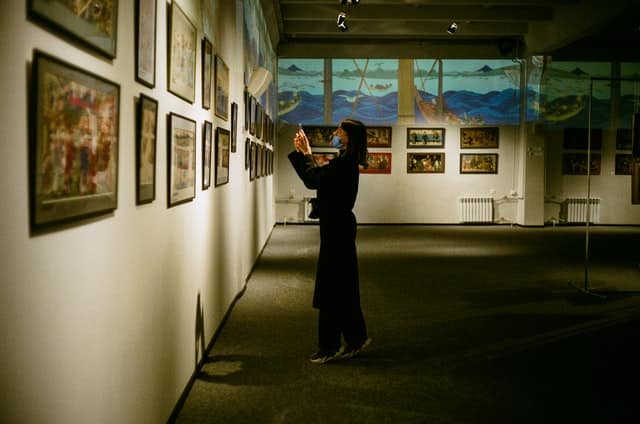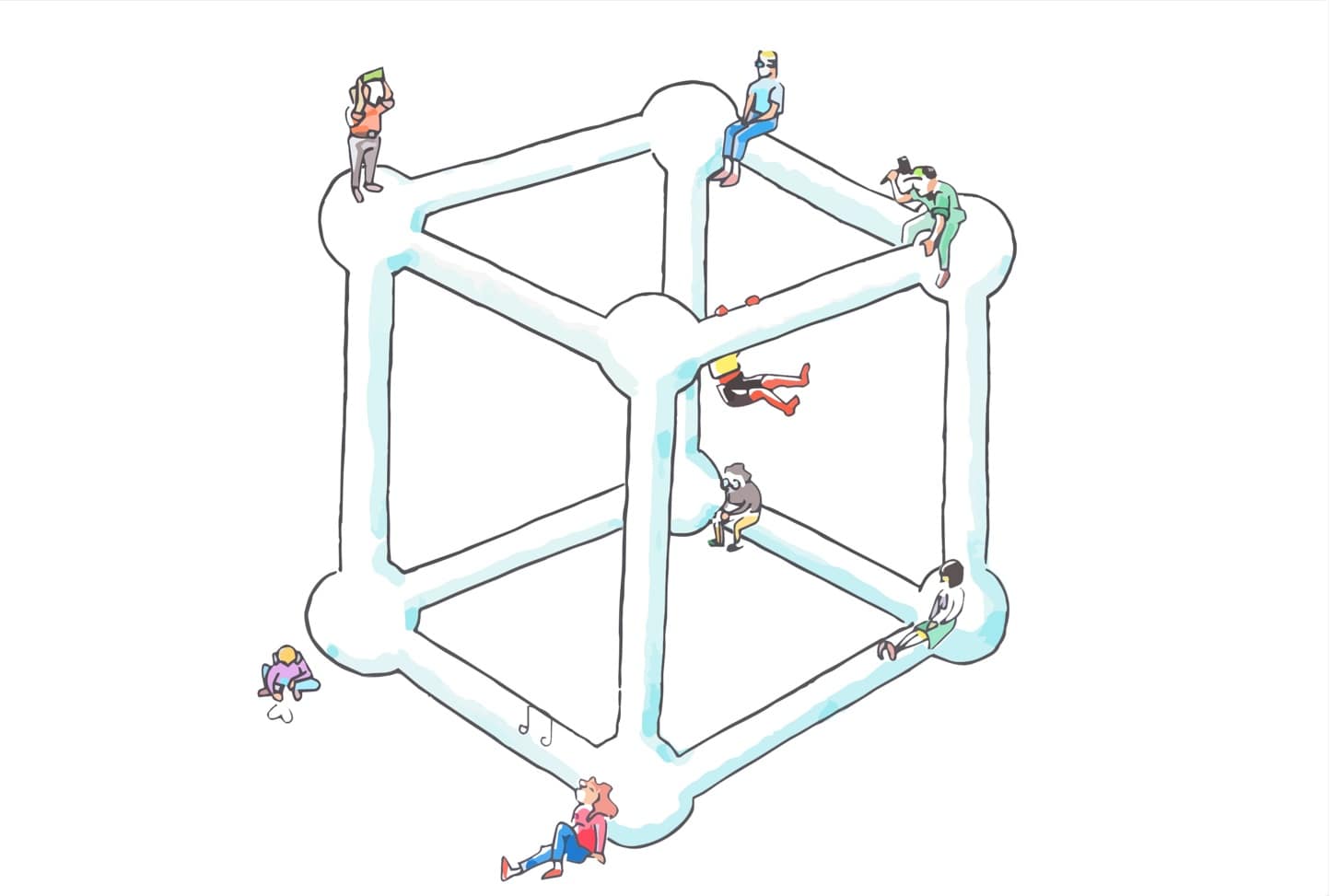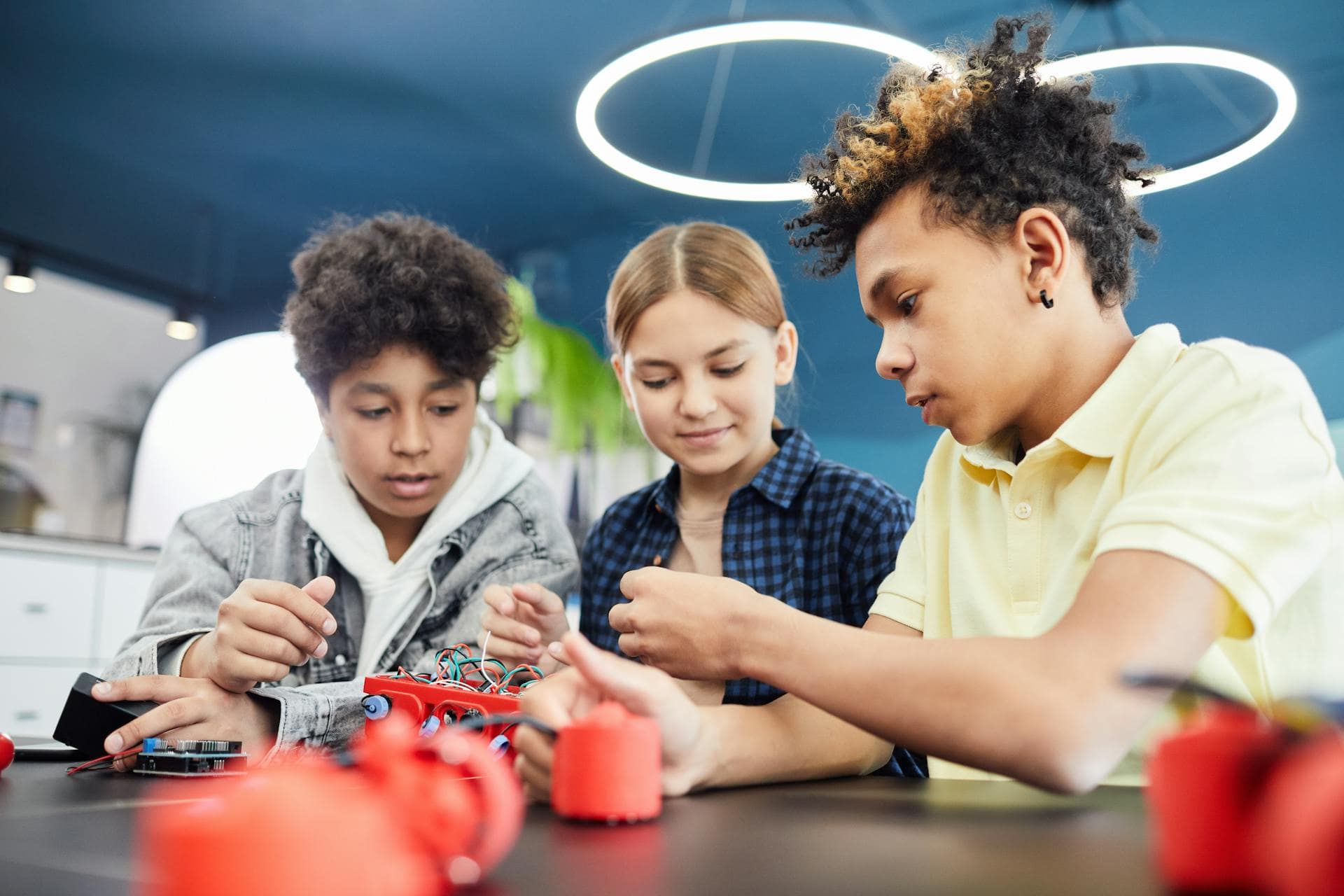
Artistic Evaluation In A Digital World
Art, as traditionally conceived, has the potential to touch and move people (you can read more about this in the Mindwise blogpost: ‘Mondriaan Moves: How art can move the body.’). We, as observers, tend to project our self and body into the artwork giving rise to an embodied experience and, as a result, distinct bodily sensations and movements are elicited (van Klaveren, Ueding, & Cox, 2019; Cox & van Klaveren, 2019). In this perspective, art can bridge abstract thinking and embodied experience (Dufva & Dufva, 2019). The question I am interested in answering through this post is whether, in the light of literature, experiencing traditional and digital art is comparable.
We, as observers, tend to project our self and body into the artwork giving rise to an embodied experience and, as a result, distinct bodily sensations and movements are elicited.
What is digital art?
Digital art is a term applied to contemporary art that uses digital technologies and digital media. This means that nowadays the artists can incorporate digital technologies within their artistic practices and dissemination channels. Net art, digital installations, digital reproductions, computer painting are only some examples of the infinite variety of art forms that are emerging as a result of technological progress. Social media and online galleries, exhibitions, and museum tours are the tip of the iceberg of the new ways to share the artworks with the audience (Samdanis, 2016). Such use of technologies raises interesting questions in terms of artistic and aesthetic evaluation, such as: can digital art move us in the same way as the traditional one does? Is it still an artistic experience if it occurs through digital engagement? These questions are waiting to be answered and they open up a new scientific challenge in the psychology of art field: the digital challenge.
Traditional Art versus Digital Art
- The Wheat Field with Cypresses (1889) by Vincent-van Gogh as close as possible to the original oil painting exposed in the Metropolitan Museum of Art in New York City as a classical example of traditional art. 2. Digitally enhanced version of the same painting by rawpixel.com. 3. A digital painting by Steve Elliott created using the natural painting software ArtRage, inspired by the Van Gogh’s famous painting.
The underlying problem to this challenge is the tension between traditional art and digital art, which remains unsolved. From a historic-traditional school of thought, there is a resistance to the change of artworks’ nature. It is usually conceived as a break of the bond between the artist and their work, as the entire artmaking process is seen as more trivial and lacking the ‘human touch’ (Lughi, 2014). Thus, for instance, creating a painting with graphic software is sometimes seen as a shortcut used by the artist to achieve a great piece of art in terms of color and composition, by erasing any mistake made with the “undo” button. This does not easily adapt to appreciative conventions. Whereas, if the artist creates the same painting using paintbrushes and oils, the greatness of the piece would be clearly acknowledged for the appreciation of particular effects (i.e.: color and composition) as well as of the high degree of difficulty (Thomson-Jones & Moser, 2019).
In contrast to this traditional point of view, it has been argued that the artistic experience is about what is provoked in the audience regardless of the techniques that artists use for making and sharing their work (Rani, 2018). The audience can still appreciate an amazing digital painting because of its unique qualities, not to mention the way it makes them feel. Focusing only on the appreciation of the techniques obscures the importance of the meaning an artwork intends to convey. Hence, a digital painting is not less beautiful or meaningful because of its digitality. Both art practices could still share the same cognitive, bodily, and emotional endpoints that could be investigated with established methodologies and conventions (Bentkowska-Kafel, 2015). Nonetheless, art is innovating at an intense speed and it is adapting to a constantly changing digital scenario. For this reason, the digital challenge may require a rethinking of artistic production, as well as its evaluation criteria (Lughi, 2014).
In contrast to this traditional point of view, it has been argued that the artistic experience is about what is provoked in the audience regardless of the techniques that artists use for making and sharing their work (Rani, 2018).
Digital art, together with the artists’ creativity, has made numerous pathways for intensifying unique art experiences and tearing down boundaries for imagination by using practices that seem to bring the impossible to life. For example, the audience does not have to imagine how would it be like to be in a painting, they can just experience it through virtual reality (VR). Thanks to techniques such as the Tilt Brush by Google and VR headsets it is possible to walk into paintings almost like Mary Poppins in the chalk drawing. Moreover, the Internet offers ‘any place, any time’ digital access to thousands of different artworks, raising higher expectations of artistic experience in a museum (Thomson, Purcell & Rainie, 2013). In light of the above, we may also infer digitalization in art challenges our perceptions and affect the way we create and appreciate artworks.
Digital art, together with the artists’ creativity, has made numerous pathways for intensifying unique art experiences and tearing down boundaries for imagination by using practices that seem to bring the impossible to life.
At the dawn of the digital challenge
Until recently, digital art has been included in the field of Neuroaesthetics and psychology of art merely as a convenient stimulus in experiments. Few attempts have been made to empirically investigate the value and impact of digital art on the audience compared to traditional art experiences. These efforts mostly concern digital reproductions of paintings rather than fully digital produced art (see Siri et al., 2018; Reymond et al., 2020). Reymond and colleagues’ study (2020) on the aesthetic evaluation of digitally reproduced art is an interesting example. The study used manipulation of image surface (i.e., color saturation) of famous traditional paintings. It investigated whether laypersons’ liking and emotional reactions to digitized images would be influenced by color saturation. Indeed, results showed that increased saturation had an impact on emotions like ‘surprise’ and ‘interest’, indicating that the participants found images with enhanced color saturation more surprising, interesting, and moving. Hence, laypersons found the original images more ´boring´ than the ones with increased saturation. This study altogether with others about digitized reproduction of works of art, result in the idea that both types of artworks (real and digitized ones) can be considered as artistic products (Siri et al., 2018). They gave us a subtle hint of the ongoing importance of technology to art appraisal (Gamboe, 2014). Still, these studies are limited to the appreciation of traditional painting in a manipulated digital format.
The first study that uses original, born-digital works of art as stimuli has been conducted by Calbi and colleagues (2019). It evaluates eye gaze and explicit behavior while observing digital works of art. The results show the beholders’ body is involved in a relationship with the properties and the aesthetic judgment of the digital artworks. It constitutes small steps towards the study of digital art experience, even if it lacks an explicit comparison with traditional art or with non-artistic digital objects.
A literature review has suggested diverse critical perspectives on the traditional vs. digital art debate, here briefly summarized, concluding that it is no possible to compare the two art experiences without first considering the digital arts as an artistically significant category (Thomson-Jones & Moser, 2019). This would establish the basis for investigating more the mysterious world of digital art and its experience.
At this time, the little evidence provided by research suggests the possibility of digital art as capable of evoking feelings just like traditional art. It created a small opening for the empirical aesthetics to face the digital challenge. It raises questions and open prospects:
- Does technology enrich art-elicited emotions and experiences?
- Are digital arts getting closer and closer to replicating the personal interaction of traditional art in a real-life environment?
- And, ultimately, can we feel the human touch through pixels and virtual experiences?
References
Bentkowska-Kafel, A. (2015). Debating digital art history. International Journal for Digital Art History, (1), 51-64. https://doi.org/10.11588/dah.2015.1.21634
Calbi, M., Aldouby, H., Gersht, O., Langiulli, N., Gallese, V., & Umiltà, M. A. (2019). Haptic aesthetics and bodily properties of ori gersht’s digital art: A behavioral and eye-tracking study. Frontiers in psychology, 10, 2520. https://doi.org/10.3389/fpsyg.2019.02520
Cox, R. F., & van Klaveren, L.-M. (2019). An Exploratory Study into the Embodied Experience of Art. Manuscript submitted for publication. 1-18. Department of Psychology, University of Groningen.
Dufva, T., & Dufva, M. (2019). Grasping the future of the digital society. Futures, 107, 17-28. https://doi.org/10.1016/j.futures.2018.11.001
Gamboe, S., 2014. THE INFLUENCE OF TECHNOLOGY IN ART APPRECIATION AND SALES AS A FACTOR IN THE SUSTAINABILITY OF THE RETAIL ART INDUSTRY. [online] Available at: <http://www.usf.edu/business/documents/undergraduate/honors/thesis-gamboa-sarah.pdf>.
Lughi, G. (2014). Digital Media and Contemporary Art. Mimesis Journal. Scritture della performance, (3, 2), 43-52. https://doi.org/10.4000/mimesis.686
Rani, A. (2018). Digital Technology: It’s Role in Art Creativity. Journal of Commerce, 13(2), 61. https://doi.org/10.26703/JCT.v13i2-9
Reymond, C., Pelowski, M., Opwis, K., Takala, T., & Mekler, E. D. (2020). Aesthetic Evaluation of Digitally Reproduced Art Images. Frontiers in psychology, 11. https://doi.org/10.3389/fpsyg.2020.615575
Samdanis, M. (2016). “The impact of new technology on art”. In J. Hackforth-Jones, I. Robertson (Eds.), Art Business Today: 20 Key Topics, London: Lund Humphries, pp. 164-172
Siri, F., Ferroni, F., Ardizzi, M., Kolesnikova, A., Beccaria, M., Rocci, B., … & Gallese, V. (2018). Behavioral and autonomic responses to real and digital reproductions of works of art. Progress in brain research, 237, 201-221.
Thomson, K., Purcell, K., & Rainie, L. (2013). Arts organizations and digital technologies. Pew Research Center, 4.
Thomson-Jones, K., & Moser, S. (2019). The philosophy of digital art. The Stanford Encyclopedia of Philosophy, Edward N. Zalta (ed.), [online] Available at: <https://plato.stanford.edu/archives/fall2019/entries/digital-art/>.
van Klaveren, L.-M., Ueding, L. M., & Cox, R. F. (2019). Moving Art. International Conference on Perception and Action (ICPA) (pp. 1-6). Groningen: L. van Dijk & R. Withagen.





Very beautiful work. Thank you also to Groningen University for the support.
It’s a very interesting line of research! I wonder: has anyone ever presented two groups of participants with exactly the same artwork and then told them either (a) that this was an original/traditionally created work of art or (b) that this was a digitally created/enhanced work of art — to see how this would affect people’s judgments? I could imagine this might be a nice way to assess something about people’s ‘art stereotypes’ and the way our knowledge of how an artwork was created affects our appreciation of it.
I think your point is very valid, it focuses on a shift from basic exposure of the artwork to the use of an artistic design stance, that is when the audience acquires more information about the artwork. It primes into triggering a better artistic understanding and it reshapes the audience’s responses. There are several pieces of research about this, but -as far as I am aware- they are not specifically about the difference between traditional and digital art experiences.
I think that giving such information to participants could bias them. It could lead to an investigation of the art-historical context of the artwork and, possibly, to the common idea that the traditional is better than the digital one. That is just my wild guess though. Perhaps, a younger audience could be more open to acknowledging the value of digital art, who knows!
P.S.: If you are interested in the topic, “The artful mind meets art history: Toward a psycho-historical framework for the science of art appreciation” by Bullot and Reber is a great read.
Thank you!